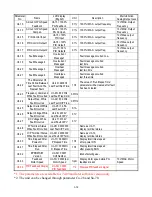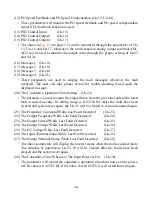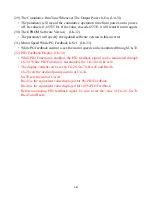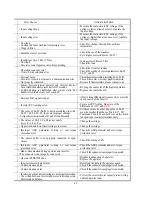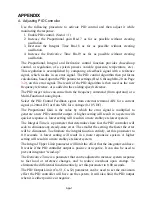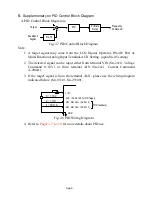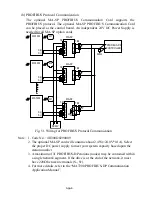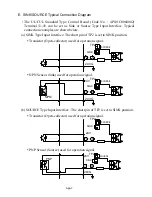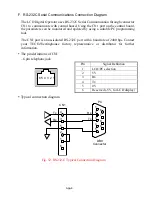
3-80
(12)
PG Speed Feedback and PG Speed Compensation (Un-13, Un-14)
•
These parameters will monitor the PG speed feedback and PG speed compensation
signal if PG feedback function is used.
(13)
PID Control Input
(Un-15)
(14)
PID Control Output1
(Un-16)
(15)
PID Control Output2
(Un-17)
•
The values in
Fig. 12
(on page 3-7) can be monitored through the parameters of Un-
15, Un-16 and Un-17. Moreover, the multi-function analog output terminal AO1,
AO2 can be used to monitor the output value through the proper setting of Sn-33
and Sn-34.
(16)
Message 1 (Un-18)
(17)
Message 2 (Un-19)
(18)
Message 3 (Un-20)
(19)
Message 4 (Un-21)
•
These parameters are used to display the fault messages whenever the fault
occurred. The user can take proper action for trouble-shooting based upon the
displayed message.
(20)
The Cumulative Operation Time Setting (Un-22)
•
The parameter is used to count the elapsed time from the previous fault to the latest
fault occurred recently. Its setting range is 0~65536 Hr. After the fault have been
cleared and system reset again, the Un-22 will be cleared to zero and counted again.
(21)
The Frequency Command While Last Fault Occurred
(Un-23)
(22)
The Output Frequency While Last Fault Occurred
(Un-24)
(23)
The Output Current While Last Fault Occurred
(Un-25)
(24)
The Output Voltage While Last Fault Occurred
(Un-26)
(25)
The DC Voltage While Last Fault Occurred
(Un-27)
(26)
The Input Terminal Status While Last Fault Occurred
(Un-28)
(27)
The Output Terminal Status While Last Fault Occurred
(Un-29)
•
The above parameters will display the inverter status when the fault occurred lately.
The contents of parameters Un-23~29 will be cleared after the faults have been
cleared and the system reset again.
(28)
The Cumulative Time Whenever The Input Power Is On
(Un-30)
•
The parameter will record the cumulative operation time from power-on to power-
off. Its value is 0~65535 Hr. If the value exceed 65535, it will restart from 0 again.













